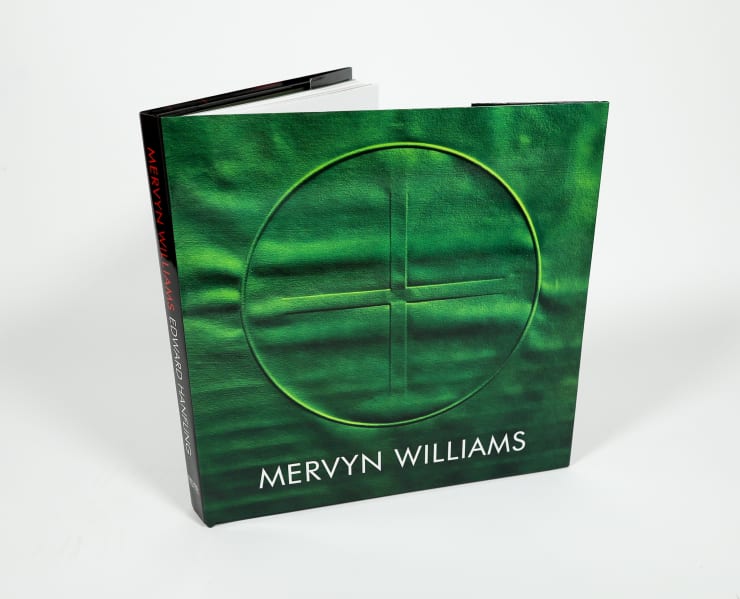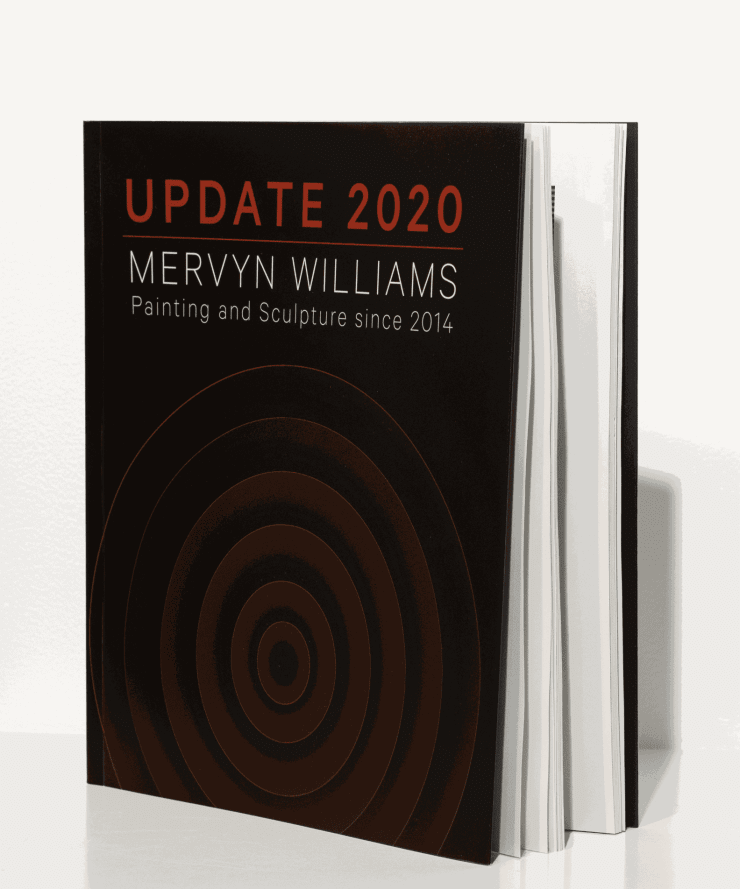Mervyn Williams b. 1940
-
 Mervyn WilliamsAll at Sea, 2017Acrylic on canvas91 x 91 cm
Mervyn WilliamsAll at Sea, 2017Acrylic on canvas91 x 91 cm -
 Mervyn WilliamsBending Blue, 2011Acrylic on canvas91 x 91 cm
Mervyn WilliamsBending Blue, 2011Acrylic on canvas91 x 91 cm -
 Mervyn WilliamsCentrefuge, 2013Acrylic on canvas122.5 x 122 cm
Mervyn WilliamsCentrefuge, 2013Acrylic on canvas122.5 x 122 cm -
 Mervyn WilliamsDaisychain, 2004Acrylic on canvas167 x 156 cm
Mervyn WilliamsDaisychain, 2004Acrylic on canvas167 x 156 cm -
 Mervyn WilliamsFontana, 2013Mixed media on canvas102 x 102 cm
Mervyn WilliamsFontana, 2013Mixed media on canvas102 x 102 cm -
 Mervyn WilliamsPolar (Grey), 2013acrylic on canvas91.5 x 91.5 cm
Mervyn WilliamsPolar (Grey), 2013acrylic on canvas91.5 x 91.5 cm -
 Mervyn WilliamsQuotient, 2008Acrylic on canvas68 x 80 cm
Mervyn WilliamsQuotient, 2008Acrylic on canvas68 x 80 cm -
 Mervyn WilliamsRadiant Red, 1992Acrylic on canvas80 x 65 cm
Mervyn WilliamsRadiant Red, 1992Acrylic on canvas80 x 65 cm -
 Mervyn WilliamsRamrod, 2018Acrylic on canvas91 x 91 cm
Mervyn WilliamsRamrod, 2018Acrylic on canvas91 x 91 cm -
 Mervyn WilliamsRed Renewal , 2013Mixed media on canvas91.5 x 91.5 cm
Mervyn WilliamsRed Renewal , 2013Mixed media on canvas91.5 x 91.5 cm -
 Mervyn WilliamsRevelation, 2011Acrylic on canvas91 x 91 cm
Mervyn WilliamsRevelation, 2011Acrylic on canvas91 x 91 cm -
 Mervyn WilliamsSamba (Red), 2012Mixed media on canvas122.5 x 122.5 cm
Mervyn WilliamsSamba (Red), 2012Mixed media on canvas122.5 x 122.5 cm -
 Mervyn WilliamsSolitaire, 1999Acrylic on canvas95 x 80 cm
Mervyn WilliamsSolitaire, 1999Acrylic on canvas95 x 80 cm -
 Mervyn WilliamsSpellbound , 2015Aluminium on wooden plinth60 x 59 cm
Mervyn WilliamsSpellbound , 2015Aluminium on wooden plinth60 x 59 cm -
 Mervyn WilliamsUnder Capricorn, 1999Acrylic on canvas135 x 148.6 x 3.3 cm
Mervyn WilliamsUnder Capricorn, 1999Acrylic on canvas135 x 148.6 x 3.3 cm -
 Mervyn WilliamsWhiplash - Mono, 2013Mixed media on canvas122 x 122 cm
Mervyn WilliamsWhiplash - Mono, 2013Mixed media on canvas122 x 122 cm
MERVYN WILLIAMS
b. 1940 Whakatane New Zealand
Although best known as a painter, throughout his distinguished career, Mervyn Williams’ artistic practice has also encompassed design, printmaking and sculpture.
Williams’ paintings are concerned with perception. The intrigue of the illusion in the works cannot be deciphered in reproduction. One must stand in front of the artworks themselves to understand the mastery of paintwork and chiaroscuro that trick the eye into seeing flat surfaces as low relief. When confronted with his painting, the initial assumption is of a textured surface, thick paint built up to form ridges, bubbles, buttons, creases. On closer inspection, the three-dimensional qualities are revealed as intricacies of paintwork which belie the flat surface of the canvas. The moment of uncertainty prompts a distinct desire to touch the painting to affirm its true nature.
Luminosity abounds in Williams’ works. A subtle variation of tone within the monochrome paintings creates the illusion of an ethereal light stemming from an indeterminate source. Some appear to be glowing from within, while others seem to be lit from behind, like silk held up to the sun. Though purely abstract, the textural qualities of these works evoke allusions to the world around us; patterns on sand left by the receding tide, peeling, blistered paint on a derelict building, undulating folds of fabric or a cracked concrete footpath. In his works, light, illusion and allusion unite, offering a tantalising visual exploration of the painted surface.
Early in his career, a fascination with Impressionism and Post-Impressionism led Williams to explore the mechanics of visual perception, investigating the illusionary techniques of the Pointillist artists and studying the properties of halftones and direct exposure onto photographic film. The 1981 exhibition at the Royal Academy of Art, A New Spirit in Painting celebrated a renewal of interest in painting after the predominance of performance and installation art of the late 1960s and 1970s. Neo-Expressionism was the dominating movement in this exhibition, but another direction associating painting with photography was exemplified in the works of Gerhard Richter and Sigmar Polke. When Williams saw this exhibition and others like it in London and New York, a renewed interest ensued in the ability of the painted surface to convey a sense of reality even more convincing than photography can often achieve, and he revisited experiments with light, colour and texture.
Williams began to investigate through painting the immutable nature of photographs, the ability of the image to remain intact through many degrees of enlargement. Using this property as a starting
point the artist employs a complex painting process involving many layers of translucent colour to build up a surface so convincing in its rendering of low relief that a perplexed audience is left uncertain of its surface properties, to the point at which only the tactile experience of touch will lay the problem to rest. It is an enigmatic quality that dissipates when the artwork itself is photographed and reproduced.
ARTIS Gallery has represented Mervyn Wiilliams since 2008.




















